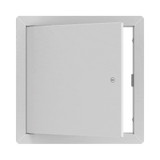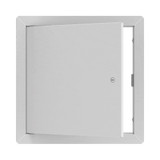Want to Build in Canada's North? Find Out What Makes This Region Unique
From the rugged, world-famous landscapes of the TombstoneTerritorial Park to the pristine shores of the Arctic, Canada’s North stands as a canvas of opportunity for ambitious construction ventures. Across its vast expanse, from coast to coast, the area is known for its expansive tundra, rugged mountain peaks, precious indigenous population, and remote wilderness. In this land of limitless potential, each construction project tells a story of ingenuity, perseverance, and the relentless pursuit of progress.
Monitoring construction trends is essential to navigating a rapidly changing landscape reshaping our nation daily. Join us as we explore the marvels that shape our cities, elevate our communities, and pave the way to a brighter future.
Opportunities for Growth and Innovation
Canada's infrastructure serves as a testament to its commitment to excellence and innovation in northern construction. With a robust economy and a growing population, the demand for modern, efficient infrastructure continues to soar. From state-of-the-art transportation networks that crisscross the nation to sustainable energy projects, Canada offers a diverse landscape of opportunities for construction professionals.
Moreover, stringent building codes and regulations ensure structures are built to withstand the harshest climates, guaranteeing safety and longevity. With a skilled workforce, cutting-edge technologies, and unwavering government support, Canada's construction industry thrives on the foundation of collaboration, creativity, and a shared vision for a brighter tomorrow.
Resilient Innovation
In Canada's colder northern communities, where temperatures can plummet and traditional construction methods face unique challenges, 3D printing emerges as a revolutionary solution poised to transform the landscape of building practices. With its ability to fabricate intricate structures layer by layer using durable materials, 3D printing offers a cost-effective and efficient alternative to conventional construction.
In regions where harsh winters can hinder on-site construction timelines, 3D printing technology provides the flexibility to manufacture building components indoors, shielded from the elements. The precision and accuracy of 3D printing ensure consistency in construction, mitigating potential issues arising from temperature fluctuations or material inconsistencies. As these communities embrace the potential of 3D printing, they unlock new possibilities for rapid and resilient construction, ushering in a future where innovation thrives even amidst the chill of winter.
Canada's diverse landscape and commitment to sustainability create an ideal environment for construction innovation. In cities like Toronto and Vancouver, towering skyscrapers showcase advanced engineering techniques, while projects such as the Gordie Howe International Bridge linking Windsor, Ontario, and Detroit, Michigan, demonstrate the country's capability for large-scale infrastructure development.
Canada benefits from exceptional ingenuity and innovation that extends to remote communities like the Inuvik-Tuktoyaktuk Highway in the Northwest Territories, improving connectivity and accessibility in challenging environments. With abundant natural resources and a skilled workforce, Canada's construction industry continues to lead in creating resilient, cutting-edge infrastructure that meets the nation's evolving needs.
In Northern Canada, where frozen landscapes and remote communities pose unique challenges to construction, ice roads play a crucial role in facilitating development. These temporary winter roads, constructed over frozen lakes and rivers, provide vital transportation corridors for construction materials, equipment, and personnel to reach otherwise inaccessible areas.
In regions like the Northwest Territories and Nunavut, where traditional road infrastructure is limited, ice roads serve as lifelines for remote communities and resource development projects. For instance, the Tibbitt to Contwoyto Winter Road, stretching over 600 kilometers from Yellowknife to several diamond mines, enables the transportation of heavy machinery and supplies during the winter months.
Additionally, ice roads expedite construction timelines by reducing reliance on costly airlifts and lengthy overland journeys. By leveraging the natural freeze-thaw cycle, construction projects in Northern Canada can capitalize on this unique transportation network to overcome logistical barriers and thrive in some of the harshest environments on Earth. Ultimately, everybody benefits.
Commitment to Sustainability
In Manitoba, Saskatchewan, and Northern Canada, which experience our nation’s coldest weather, sustainable building practices are gaining momentum, driven by environmental concerns and government support. With a focus on reducing carbon emissions and mitigating climate change, green building certifications like LEED (Leadership in Energy and Environmental Design) and Passive House are becoming increasingly prevalent.
Government programs and incentives further promote sustainable construction, offering financial support and tax incentives for projects that prioritize energy efficiency and environmental responsibility. For instance, initiatives such as the Manitoba Green Building Policy and the Saskatchewan Green Building Policy encourage green building practices in public infrastructure projects.
Integrating the right access solutions,such as the ADC-AHD General Purpose Access Door with Hidden Flange,is pivotal in enhancing efficiency and sustainable building practices across Manitoba, Saskatchewan, Northern Canada, and beyond. By meeting the stringent requirements of LEED certification, these access doors contribute to energy savings, improved indoor air quality, and reduced environmental impact.
Designed with durability and energy efficiency in mind, ADC-AHD minimizes air leakage, ensuring that conditioned air remains inside the building and reducing the workload on heating and cooling systems. This not only lowers energy consumption but also results in cost savings for building owners.
Access Doors Canada has designed ADC-AHD for longevity, reducing the need for frequent replacements and minimizing waste. Overall, installing a general-purpose LEED-certified access door represents a tangible step towards achieving sustainability goals in regional construction projects, contributing to healthier indoor conditions, easier access, and more environmentally responsible built solutions.
In conclusion, the vast potential of Northern Canada presents a compelling case for construction companies and builders to invest in the region. With its abundance of natural resources, growing infrastructure needs, and rapidly advancing technology and innovation, Northern Canada offers a unique opportunity for growth and development.
By leveraging innovative construction techniques, embracing sustainable practices, and collaborating with local communities, builders can not only meet the region's infrastructure demands but also unlock new avenues for economic prosperity and environmental stewardship.
Embracing the challenges of building in Northern Canada opens doors to a brighter future, where both builders and communities thrive in harmony with the pristine wilderness and delicate balance of the North.
Access to Efficiency
If you want to learn more about our sustainable access solutions, feel free to connect with our team. You can trust Access Doors Canada to provide the best products available. We also have warehouses near you, ensuring our items are always in stock for speedy delivery.









